SUMMARY
This is AI generated summarization, which may have errors. For context, always refer to the full article.
![[ANALYSIS] Narratives and tactics in alternative online videos](https://www.rappler.com/tachyon/2022/04/Analysis-Online-Videos-Aprll-26-2022.jpg)
The “Narratives and tactics in alternative online videos” is a study presented by the author from the Far Eastern University Public Policy Center in the eighth #FactsFirstPH research briefing held on April 26, 2022. The full copy of the research is reposted with permission.
The continued growth of the online video platform YouTube provides Filipinos with increased access to information. Unlike traditional text-heavy formats, online videos present information using audio and video while allowing for interaction through the comment section and live chat. These characteristics make online videos more appealing and contribute to its ascent as the preferred mode of accessing information. More importantly take part in shaping the narrative and influence voter choice.
YouTube in the Philippines
There are significant numbers of Filipino viewers and channels on YouTube. According to the latest figures released by YouTube, there are 45 million adult viewers in the Philippines. This is around 68% of the 65.7 million registered voters for the 2022 National Election. In terms of content creation, there are over 3,000 Filipino channels with more than 100,000 subscribers, over 250 channels with more than a million subscribers, and 12 channels with over 10 million subscribers.
There are varying estimates on the amount of time Filipinos spend on YouTube. Online marketing firm Semrush reports that Filipinos spend eight minutes and view four videos per visit while digital intelligence provider Similarweb estimates an average of 24 minutes and 12 videos per visit. On the other hand, Alexa Internet estimates that Filipinos spend around 19 minutes per day on YouTube visiting an average of 10 pages.
YouTube and the 2022 National Elections

Interest in the leading presidential candidates suggests that YouTube is a source of information on the upcoming elections. The first spike in interest coincides with the release of one-on-one interviews with the presidential candidates conducted by talk show host Boy Abunda. The second and third spikes coincide with key dates in the campaign season. These are the start of the official campaign period for national elective positions and for local elective positions.
The number of videos uploaded talking about a particular candidate could be used as a rough approximation of the volume of information shared through online videos. Based on Google search results, the leading presidential candidates in polling surveys also have the greatest number of video results.

The same pattern can be observed when zooming in on “alternative videos.” These videos are alternatives to mainstream media and information in two ways. First, they contain alternative content, which usually contradict mainstream information and opinion. It can also come in the form of new information allegedly hidden from the public.
Second, alternative videos are products of alternative structures. Traditionally, the ability to broadcast information is limited by capitalization, controls, and skills. It is limited to organizations who have the financial resources to produce and disseminate information. These organizations tend to follow a hierarchy in the editorial process and are often reserved for individuals with demonstrated professional skills acquired either through education or experience. Social media platforms, cheaper electronic devices, and increased internet penetration have enabled individuals to overcome traditional limits and participate in the generation and dissemination of information.
Narratives and tactics in alternative videos: the BBM-verse
Based on a review of alternative videos with at least 100,000 views, there seems to be a conscious effort to anchor discussion around presidential candidate Ferdinand “Bongbong” Marcos, Jr. The first effort focuses on shaming other presidential candidates for criticizing Marcos, Jr., and his supporters. This is commonly carried out through clickbait titles using the word “pahiya.”
Three opposing candidates have been targeted by this tactic. These are Leody De Guzman, who criticized the Marcos family during the SMNI debate; Senator Manny Pacquiao, who openly urged the public not to vote for thieves; and Vice President Leni Robredo, who has been vocal against the return of the Marcos family to power. Aside from clickbait titles, in-video text and graphics have also been used to embarrass other candidates.

The second effort attempts to endear Marcos, Jr., to the voting public. They typically exaggerate the contents of the video in their titles and claim that Marcos, Jr., is deeply touched by the gesture of his family and followers. The actual contents of the videos are scenes from motorcade rallies showing Marcos, Jr., interacting regularly with his son and their followers.

Supporters have also attempted to gain sympathy for Marcos, Jr., by portraying the Marcos family as victims of injustice. In a video about properties seized by government, the narrator claims that the Marcos family was denied due process. It argues that the Marcos Family was not given an opportunity to explain themselves when the properties were seized because they were in exile. But the video does not tackle how the Marcos family acquired their assets and the process by which the government, through the PCGG, seized assets. Absent these discussions, it would be premature to make any conclusions about government treatment of the Marcos family.
The third effort takes advantage of recent political developments to sow discord between Lacson and his running mate Tito Sotto and to get viewers to shift allegiances to Marcos, Jr., and his running mate. The video claims that Senator Sotto has thrown his support behind the Marcos, Jr.-Duterte tandem after being betrayed by Senator Ping Lacson.

Aside from the use of clickbait titles and in-video text, the video stitches together unrelated social media posts to bolster its narrative. The first post is a photo of Senator Sotto with Senator Marcos, sister of Marcos, Jr. The second post is a photo of Ciara Sotto, daughter of Senator Sotto, wearing a green statement shirt with the words “Ciara All.” Mayor Sara Duterte, who is running for Vice President, uses green in her campaign and a similar tagline “Sara All.” The third post is a speculation made by a vlogger. But the Lacson-Sotto tandem continues to campaign together despite the speculation of a split.
Discrediting a non-BBM scenario
Alternative videos have also been used as vehicles for discrediting other presidential candidates and the electoral process. De Guzman, a labor activist, has been red-tagged in alternative videos following statements he made during the SMNI debates. In one video, a clickbait title is used to imply that De Guzman is involved in suspicious activities. The actual contents of the video insinuate that De Guzman is supportive of the New People’s Army (NPA) despite categorical statements made by De Guzman that he is not in favor of armed conflict. In another video, in-video text and graphics are applied to directly red-tag De Guzman.

Mayor Isko Moreno has been portrayed as a credit grabber in relation to the Golden Mosque in Manila. The video, which uses a clickbait title, features the Administrator of the Golden Mosque being interviewed by an anonymous individual behind the camera. The Administrator is asked to comment on gossip, allegedly circulating in Mindanao, that Moreno claims to have built the Golden Mosque. The video in question has since been spliced and reuploaded on TikTok. A fact-check piece on the TikTok version has shown that Moreno never made any statement claiming credit for the construction of the Golden Mosque.
Since he began his political career, Senator Pacquiao has always been belittled for his lack of educational attainment. Alternative videos aimed at the Senator have used terms such as “ignorante” and “mag-aral muna” to impress upon the public that he lacks the capability to lead the country. He is also being painted as an individual going through financial and legal difficulties.

Vice President Robredo has faced a variety of issues to discredit her campaign. The more common strategies include the use of gossip to spread her alleged “dirty secrets.” Another common strategy is to portray Vice President Robredo as absentminded.

She has also been linked to the NPA and is rumored to have joined the group at the age of 15. Rappler has already debunked this claim in 2020.
Supporters of Marcos, Jr. have also been using statements made by other presidential Candidates like Senator Lacson and Jose Montemayor to discredit opposing candidates. For instance, Senator Lacson has been used as a whistleblower that exposes Vice President Robredo’s true motive for seeking the presidency and alleged dealings with local politicians. Such tactics pit presidential candidates and their supporters against each other and only benefit the current frontrunner, Marcos, Jr. While he has made statements against negative campaigning, his proxies continue to muddle the campaign trail for everyone else, allowing Marcos, Jr., to campaign on his own terms.
There are also videos circulating online that discredit the electoral process. Several revolve around the electoral protest filed by Marcos, Jr., in relation to the 2016 vice presidential elections. One video casts doubt on the integrity of the 2016 results. It features a spliced clip of a group of individuals handling what appears to be election-related paraphernalia. It is followed by an unidentified individual claiming that they have videos to prove election fraud conducted in Mindanao.
Another video claims that Vice President Robredo is in collusion with the Commission on Elections (COMELEC) and Smartmatic. The actual content features a clip of a religious leader commenting on COMELEC’s transparency and does not discuss the alleged collusion. Conspiracy theories have also been employed to suggest foreign interference in the upcoming elections. One video claims that the Central Intelligence Agency have been interfering with the results of the Presidential elections since the 1950s.
Emerging narratives in alternate videos circulating online seem to reinforce the popular saying: walang natatalo sa eleksyon, meron lang nadadaya (There are no losers during elections, there are only candidates who get cheated). On the one hand, we find many examples of alternative videos that put Marcos, Jr., in the center of the discussion. A Marcos, Jr., victory legitimizes his position as the focal point of Philippine politics.
On the other hand, there are also many examples of alternative videos that discredit any other outcome. This could condition the public, especially supporters of Marcos, Jr., to question the legitimacy of the electoral process and the next president.
The democratization of the internet presents us with opportunities to change our communication patterns. Ideally, social media platforms, cheaper electronic gadgets, and increased internet penetration can be utilized to elevate the discourse on public policy. In practice, novel ways of communicating are mostly hijacked by individuals and organizations who wish to control the narrative.
So far, the democratization of the internet has been primarily used as another avenue for backward politicking characterized by gossip and mudslinging. While seeking accountability from social media platforms is warranted, this goes against the core idea of democratizing the internet.
Perhaps, more attention should be given to support the rise of alternative videos that complement mainstream information and enrich public discussion. This can be achieved by building communities around better content creators through engagement (e.g., like, react, share, comment, and subscribe) and crowdfunding. – Rappler.com
Justin Muyot is a Technical Consultant at the FEU Public Policy Center. He is a Senior Lecturer at the UP National College of Public Administration and Governance (NCPAG) and has taught courses on policy analysis, development planning, public finance, and economic systems. He obtained his undergraduate degree in business economics from the UP School of Economics in 2011 and completed the dual degree program (Master in Public Policy/Master in Public Administration) of the Lee Kuan Yew School of Public Policy (LKYSPP) and the London School of Economics and Political Science (LSE) in 2017.
Add a comment
How does this make you feel?
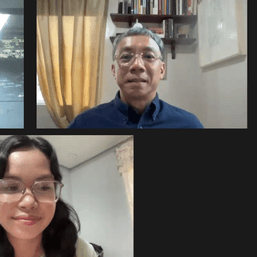
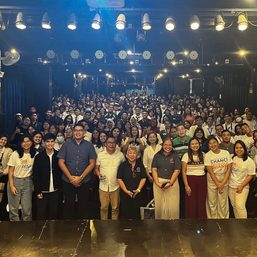
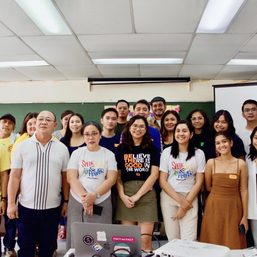
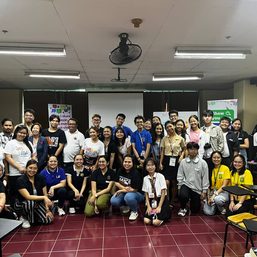
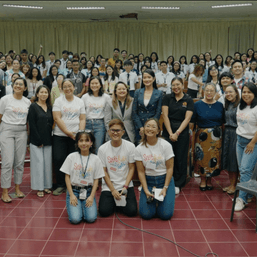
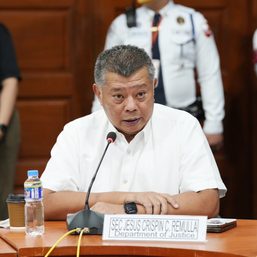
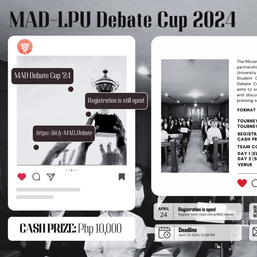

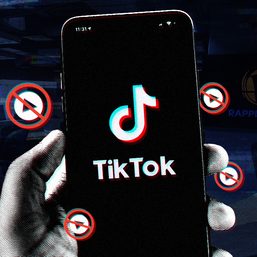
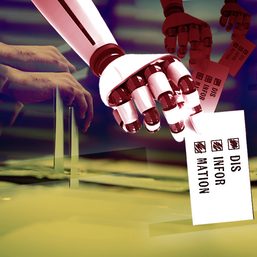


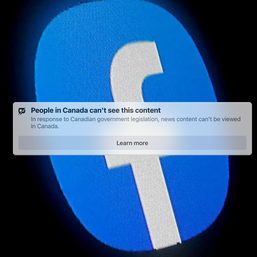
![[OPINYON] Takoyaki tattoo at ang business model ng pang-iinis](https://www.rappler.com/tachyon/2024/04/20240410-Takoyaki-tattoo.jpg?resize=257%2C257&crop_strategy=attention)

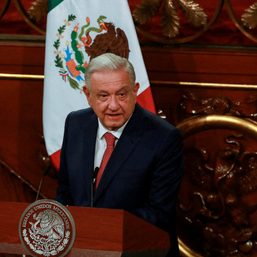


There are no comments yet. Add your comment to start the conversation.